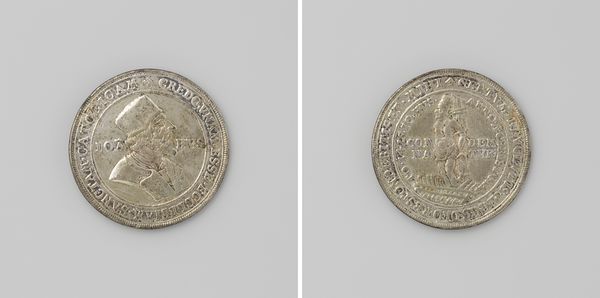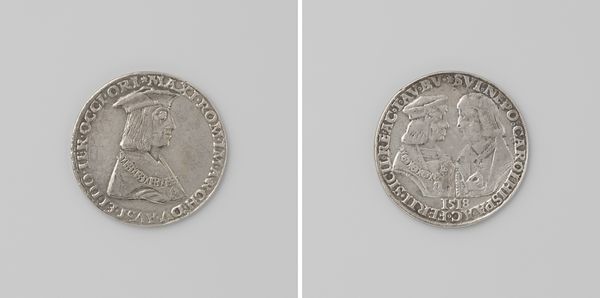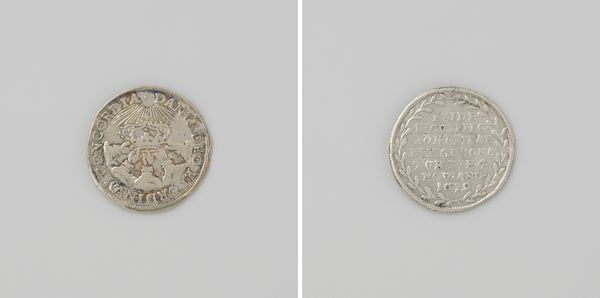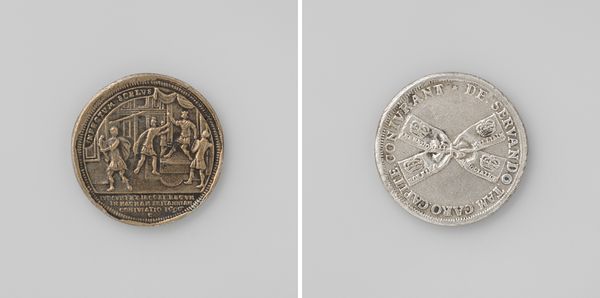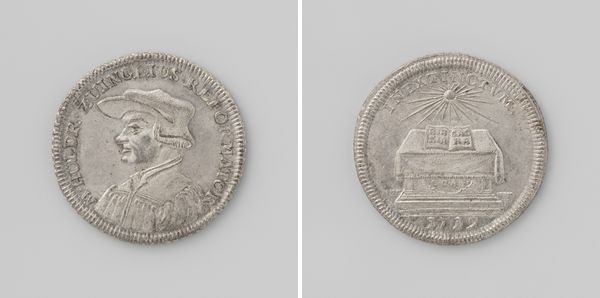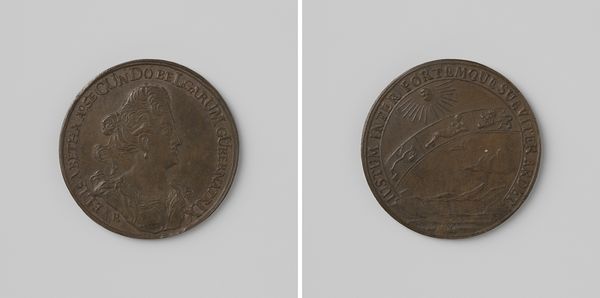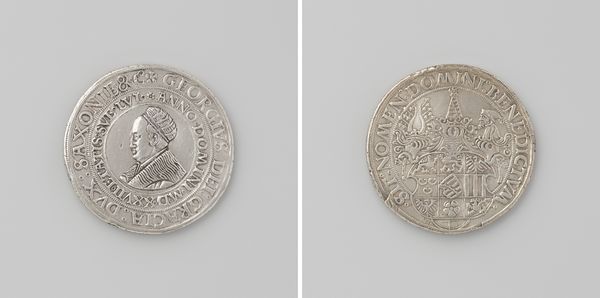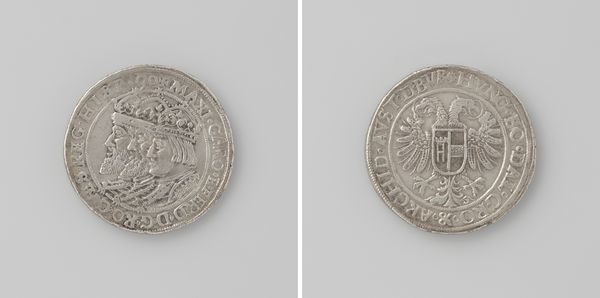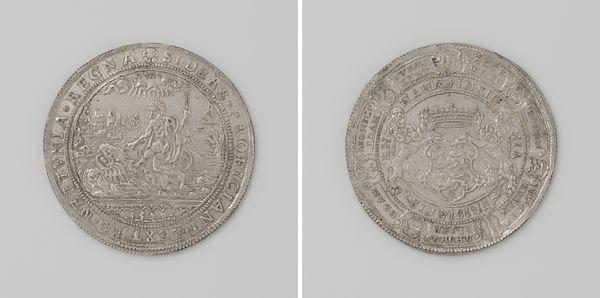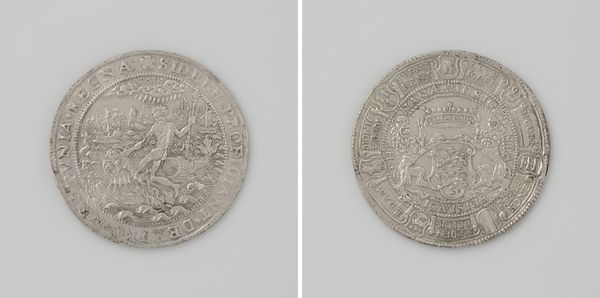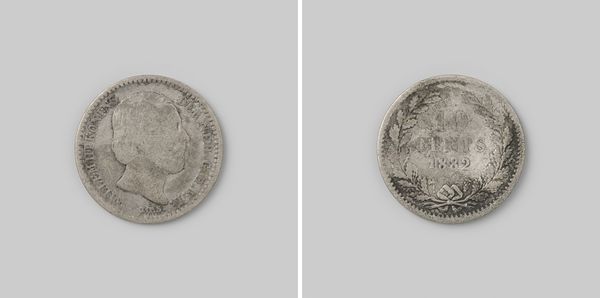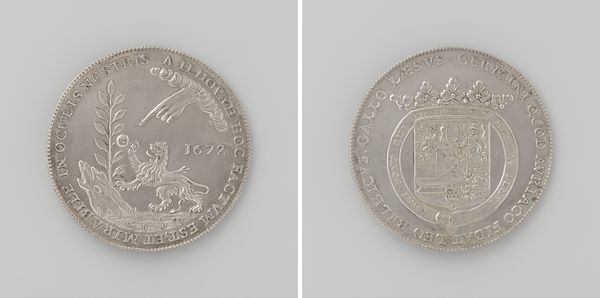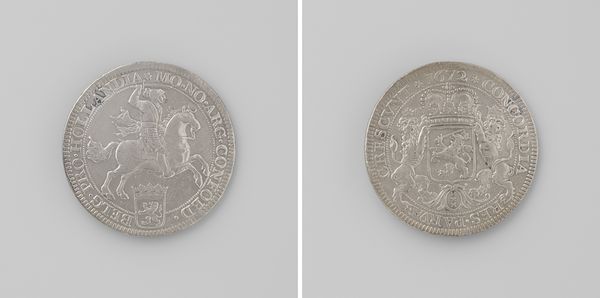
Maximiliaan, aartshertog van Oostenrijk en Maria, hertogin van Bourgondie 1506
0:00
0:00
print, metal, sculpture
#
portrait
# print
#
metal
#
11_renaissance
#
sculpture
#
italian-renaissance
Dimensions: diameter 4.2 cm, weight 30.44 gr
Copyright: Rijks Museum: Open Domain
Curator: At first glance, I am drawn to the tactile quality – it appears cold and metallic. Editor: This artwork presents two silver medallions, sculpted in metal, dating back to 1506, attributed to Giovanni di Candida, titled 'Maximiliaan, aartshertog van Oostenrijk en Maria, hertogin van Bourgondie'. Curator: So we're looking at a marital statement cast in metal. The profiles are so stark and contained; even as miniatures, these two rulers embody power. What do you make of their depictions? Editor: In Maria's medallion, notice the wreath adorning her hair; it symbolizes virtue, honor, and victory, reflecting the ideals expected of noblewomen during that era. Meanwhile, the text surrounding each profile creates an encapsulating border of royal authority and declaration. Curator: It’s impossible to divorce this object from its inherent purpose as a mechanism of dynastic and political affirmation. It speaks volumes about gendered power relations, particularly within the context of late 15th and early 16th century European aristocracy. Maria's portrayal, framed by her title as Duchess of Burgundy, and Maximillian, as Archduke of Austria, these medallions broadcasted privilege and control through meticulously crafted portraiture. Editor: Precisely. Consider the visual language employed. Both figures are captured in profile, a classical allusion invoking ancient coins, aligning the subjects with the legitimacy of prior empires. The permanence of the metal emphasizes the timelessness the royal families sought. The deliberate placement and the shared symbolic attributes subtly portray equality within their union. Curator: I agree; this work is far more than simply commemorative. I would say it is a statement against vulnerability—Maximillian and Maria as rulers determined to display not merely authority but self-mastery, reflecting their era's socio-political needs. Editor: Absolutely. I appreciate how delving into the layers of imagery allows us to reconsider historical accounts and explore how cultural ideals persist over time. Curator: Yes, thinking about their agency and presentation through a modern lens really underscores the historical underpinnings of our present-day power dynamics.
Comments
No comments
Be the first to comment and join the conversation on the ultimate creative platform.
